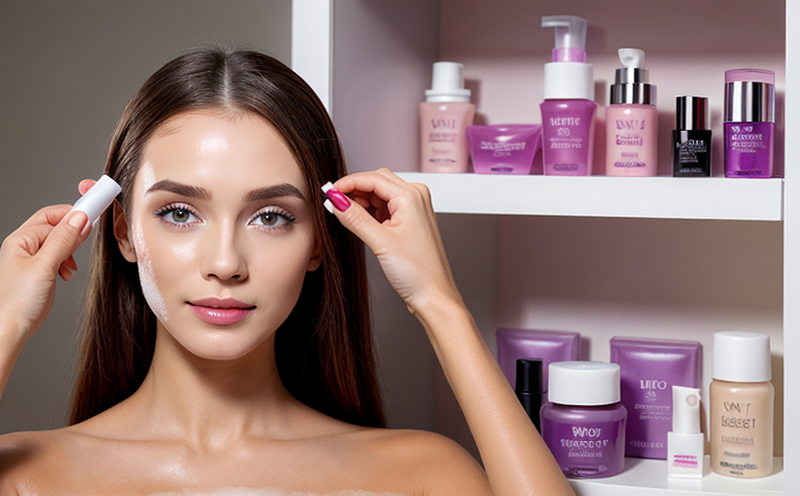Color Stability Testing of Cosmetic Pigments
In the realm of consumer products and product safety testing, particularly within cosmetics and personal care products, ensuring the stability of cosmetic pigments is paramount. Color stability not only guarantees consistent product quality but also enhances brand reputation and customer satisfaction. This service focuses on evaluating how pigment colors withstand various environmental factors such as light exposure, temperature changes, and pH variations. By conducting rigorous color stability tests, manufacturers can ensure that their products remain visually appealing over extended periods.
The process involves exposing cosmetic pigments to controlled conditions designed to simulate real-world storage and usage scenarios. This includes accelerated aging techniques using artificial light sources like xenon arc lamps to mimic sunlight exposure. Additionally, temperature cycling machines help assess how pigments behave under fluctuating temperatures. pH testing is performed to determine the pigment's resistance against acidic or alkaline environments that may be encountered during product use.
Testing cosmetic pigments for color stability helps prevent issues such as fading, discoloration, and loss of vibrancy which could lead to product recalls and negative consumer perceptions. It also aids in optimizing formula development by identifying potential problems early on, allowing manufacturers to make necessary adjustments before full-scale production.
Achieving reliable results requires precise laboratory procedures combined with advanced analytical equipment capable of quantifying color changes accurately. Our state-of-the-art facilities utilize sophisticated spectrophotometers and other instrumentation tailored specifically for pigment analysis. These tools enable us to measure minute alterations in hue, saturation, and brightness levels over time, providing comprehensive data about the pigments' performance.
| Standard | Description |
|---|---|
| ISO 105-A02 | Photostability of textiles, leather, and related materials - Determination by xenon arc exposure. |
| ASTM E1679-21 | Standard Practice for Photostabilization Testing of Pigments and Pigment Pastes. |
Why It Matters
Ensuring color stability is critical because consumers expect their cosmetic products to maintain their original appearance throughout the shelf life. Brands that fail to meet these expectations risk losing customer trust and face significant financial losses due to returns, refunds, or even legal actions. Furthermore, unstable pigments might contribute to environmental concerns if they degrade into harmful substances during disposal.
From a regulatory perspective, adhering to stringent color stability requirements ensures compliance with international standards set by bodies like the European Union and United States Food & Drug Administration (FDA). Meeting these regulations protects companies from potential fines and reputational damage. Moreover, stable pigments contribute positively towards sustainability goals by reducing waste generated through re-formulations or recalls.
- Reduces product recall risks
- Promotes consumer trust
- Aids in regulatory compliance
- Supports sustainable practices
Applied Standards
The following international standards guide our color stability testing procedures:
| Standard | Description |
|---|---|
| ISO 105-A02 | Photostability of textiles, leather, and related materials - Determination by xenon arc exposure. |
| ASTM E1679-21 | Standard Practice for Photostabilization Testing of Pigments and Pigment Pastes. |
International Acceptance and Recognition
Our color stability testing methods are widely accepted globally, adhering to both European Union (EU) directives and United States Food & Drug Administration (FDA) regulations. These tests align with international standards ensuring consistent quality across different markets.
- Affirmed by EU Cosmetics Regulation
- Compliant with FDA Color Additives Regulations





